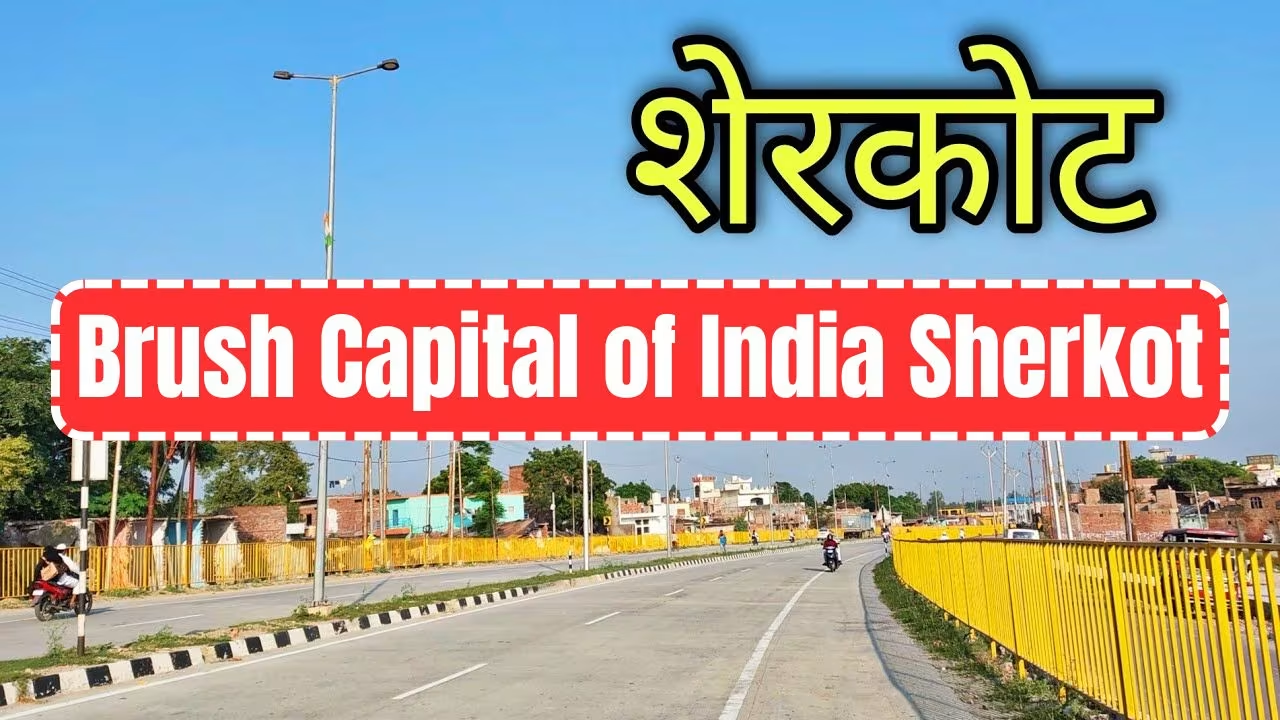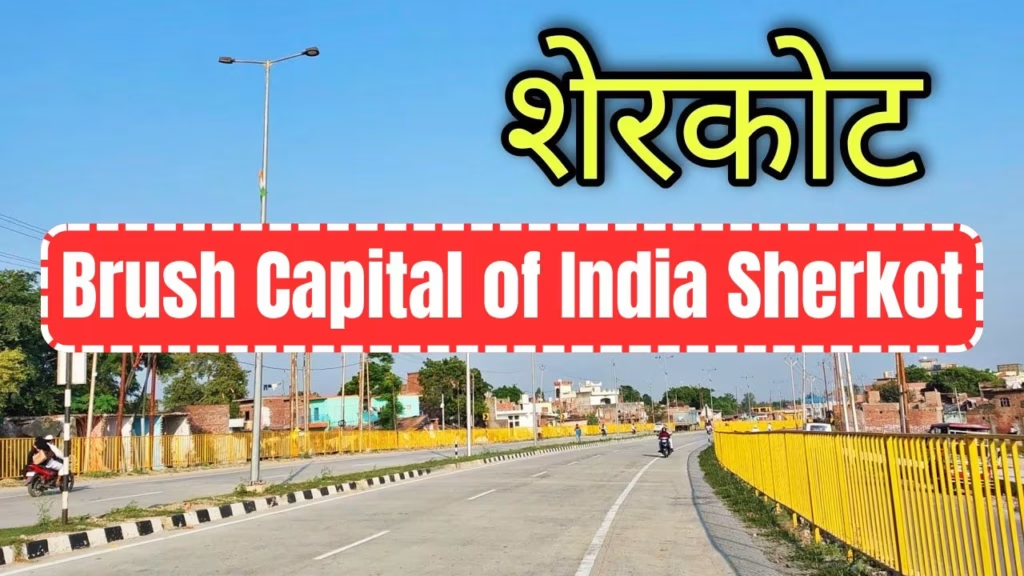Brush Capital of India Sherkot: Nestled in the heart of Uttar Pradesh’s Bijnor district, the unassuming town of Brush Capital of India Sherkot tells a story far beyond its modest streets and riverbanks. Often called the “Brush Nagari”, Sherkot is the lifeblood behind nearly 70% of the country’s painting and drawing brushes. This small town’s economic pulse beats through its prolific brush-making industry, which not only sustains thousands of families but also carries a rich heritage of craftsmanship that dates back over a century.
Sherkot’s brush industry is a tapestry woven from small-scale and cottage setups—about 600 units scattered across the town, many operating from individual homes. These units collectively employ between 25,000 and 30,000 workers, illustrating how deeply embedded this craft is in the local economy. The town’s contributions reverberate across India, supplying brushes to states like Rajasthan, Kerala, Karnataka, Maharashtra, Tamil Nadu, Uttarakhand and West Bengal, fueling both domestic demand and small-scale exports.
The Brush Capital of India Sherkot Backbone
The roots of Sherkot’s brush-making began around 1914, initiated by local entrepreneurial families who bridged a market gap when brush imports were unavailable from England. Since then, the industry has burgeoned into a cornerstone of Sherkot’s livelihood. The manufacturing process is predominantly unorganized, yet its scale and output underscore the town’s significance in the national paint brush market.
Raw materials such as PVC, wooden handles, bristles, tin ferrules (which hold brush hair or filaments), and epoxy glue are sourced from various cities including Kanpur and Delhi. Local labor meticulously assembles these into a diverse range of brushes—from artist brushes to industrial paint brushes. Despite competition from machine-made and imported Chinese brushes, Sherkot’s handmade craftsmanship holds its own in the market due to quality and tradition.
Economic Impact and Challenges
The annual business turnover runs into crores of rupees, underpinning Brush Capital of India Sherkot’s economy largely based on this one industry. Many households depend entirely on brush-making for income, with agricultural work being secondary for some. However, recent years have brought trials. Currency shortages and cash flow challenges have hit the sector hard, causing some units to shut down temporarily or permanently. Banks’ limited cash allocations create severe hurdles, as cash payments remain the norm for suppliers and workers. This cash crunch coupled with cheaper Chinese alternatives has put the industry at a crossroads.
Yet, despite these challenges, Sherkot’s brush industry remains resilient. Local leaders and industry bodies strive to revive the business, emphasizing support and innovation to sustain this traditional craft. The sector not only sustains the town economically but also preserves a unique cultural identity, representing secular coexistence with communities of Hindus and Muslims working side by side.
Viksit Bharat Buildathon 2025 Registration, Eligibility, Theme & Dates
Sherkot Demographics 2025: A Detailed Insight into Population, Literacy, and Sex Ratio Trends
The Wider Town Economy
While brush-making is Sherkot’s hallmark, the town also benefits from some agricultural activities, primarily supported by the Kho Beraj river (also known as RamGanga locally), which aids irrigation. Other small businesses and trade complement the brush industry, but no other sector matches its impact or scope in employment.
Brush Capital of India Sherkot’s population, as per the last census, hovered around 62,000, with steady growth reflecting both its industrial pull and residential appeal. Literacy levels remain an area for improvement, with the town below the national average, indicating the need for continuous social development alongside economic growth.
Looking Ahead: Opportunities and Sustenance
Innovation and government support hold potential keys for Sherkot’s brush industry revival. Increasing mechanization while retaining the quality of handmade brushes could push productivity higher. Additionally, fostering entrepreneurship locally can diversify income avenues and bring infrastructural improvements such as better roads, power supply, and banking services—all critical for sustaining industrial growth.
Export opportunities to neighboring countries and branding Brush Capital of India Sherkot’s brushes on global platforms can enhance market reach. Leveraging technology for online sales and marketing could attract new customers beyond traditional routes.
Conclusion
Brush Capital of India Sherkot’s brush-making industry is a shining example of traditional craft fueling rural economic vitality. Despite trials, its legacy continues to inspire hope for sustainable growth and renewed prominence as the Brush Capital of India Sherkot.


